Denso CASE (Connectivity, Automation, Sharing and Electrification) Research Report, 2020
As one of the top three Tier1 suppliers in the world, Denso makes adjustments and deployments during the automotive industry disruption.
Sorting out Denso’s existing product lines, up to 200-plus varieties are found, including virtually 70 for CASE (connectivity, automation, sharing and electrification).
Denso’s CASE Products (Part)
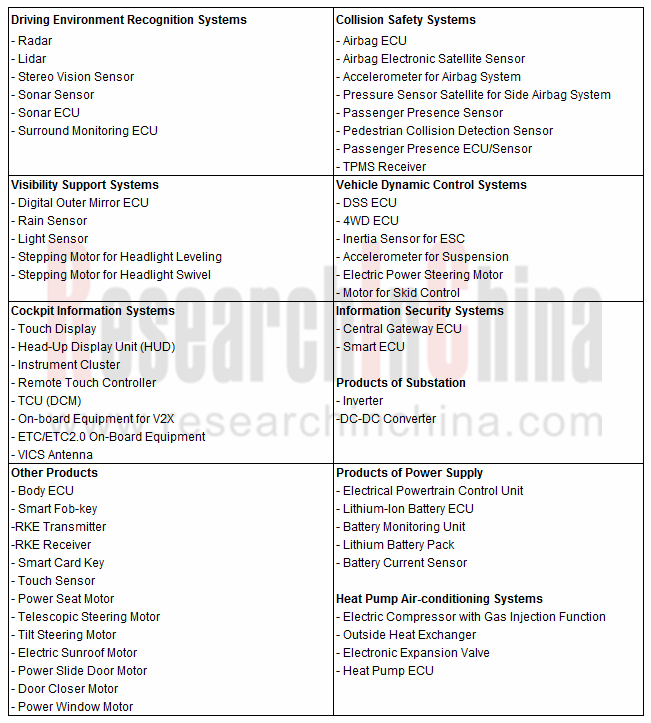
Source: Marklines; ResearchInChina
The number of auto parts will decrease in the trend towards CASE. In a recent opinion, automotive hardware will be standardized and contribute declining revenue and profits, and future competition lies in the ability to develop software-defined vehicles. Emerging carmakers have late-mover advantages with more software talents.
Another view is that Tier1 suppliers will be marginalized by OEMs (e.g., Tesla and VW) who try to lead research and development of operating system, DCU (or vehicle central computer) and core software and hardware systems.
It can be seen from Denso’s CASE layout that the supplier not only makes deployments in all aspects of hardware but spends on software not less than IT-backed firms.
Denso’s Investment in Hardware
The US government’s crackdown on Chinese high-tech companies shows that just developing software and applications at the upper layer is not enough, and holding basic materials, core components and basic software is the only way to be free of others.
Denso lavishes heavily on core fundamental technologies, including magnetic materials, power semiconductors, solid-state batteries, magnetic heat pumps, human-computer interaction, AI, sensors, and quantum computing.
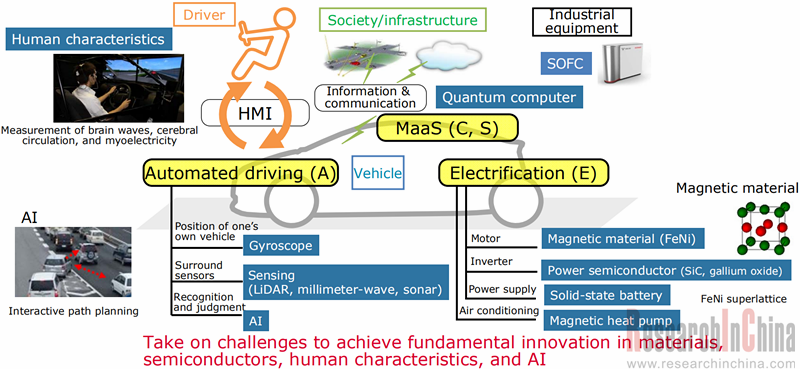
In 2018, Denso invested FLOSFIA and collaborated with the latter on developing a next-generation power semiconductor material (α-Ga2O3) for vehicle application. Schottky Barrier Diode (SBD), Flosfia’s α- Ga2O3 material, can work under 600V and 10A, with rated power of 100W-1kW, outperforming SiC products in both efficiency and cost. SBD is expected to be spawned in 2020. Theoretically, SBD material is seven times more efficient than GaN in low frequency and doubles GaN in high frequency or more.
Denso has been devoted to researching automotive semiconductor technology since its IC Laboratory was set up in 1968, having made improvements in ECU, sensor and other products. In September 2017, Denso founded a subsidiary -- NSITEXE, a developer of next-generation high-performance semiconductors. DFP (data flow processor) independently developed by NSITEXE, differs totally from CPU and GPU. For practical use of DFP, Denso and NSITEXE then invested Blaize and quadric.io, two semiconductor start-ups. Blaize, founded by former workers at Intel in 2012, builds software and process architectures from the underlying layer for better AI computing. NSITEXE helps to develop an autonomous driving technology which makes instant judgment in extreme scenarios, by combining DFP and EPU from quadric.io.
Leading Tier1 suppliers from Japan and Germany often adopt IDM model and have their own chip fabrication plants, compared with IC designers focusing on prevailing FABLESS model in China. Denso Hokkaido is Denso’s key manufacturing site of semiconductor sensors. To meet the robust demand from electrification and autonomous driving markets, Denso plans expansion of its Hokkaido plant. The expansion project will break ground in July 2020 and be completed in June 2021. The number of employees will expectedly rise to about 1,150 in 2025.
Denso’s Investment in Software
In 2025, Denso will boast 12,000 software talents worldwide; it will have more than 1,000 staffs and over 1,100 patents in autonomous driving field.
In addition to workforce enlargement for independent development, Denso also invests quite a few software firms.
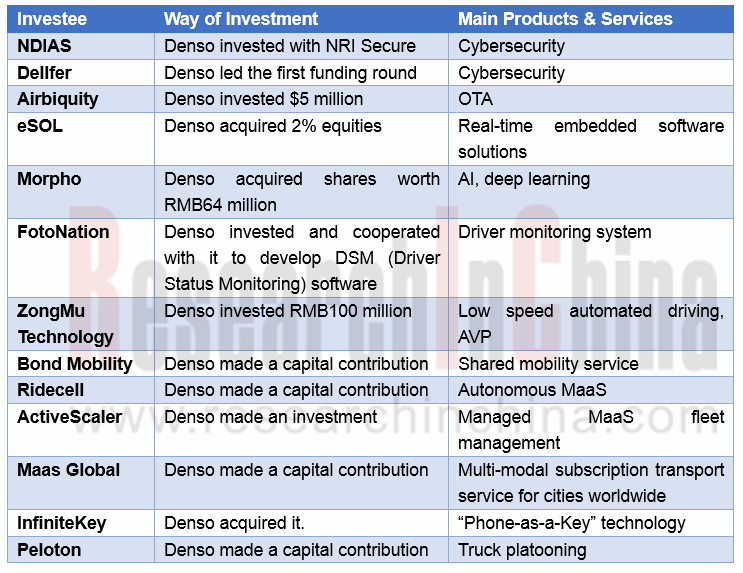
Denso’s Big Competitive Edges in an Age of CASE
From Denso’s alliance, acquisitions and investment map as below as well as the Abstract of this report, it can be seen that Denso is sinking to research and development of core technologies and parts.
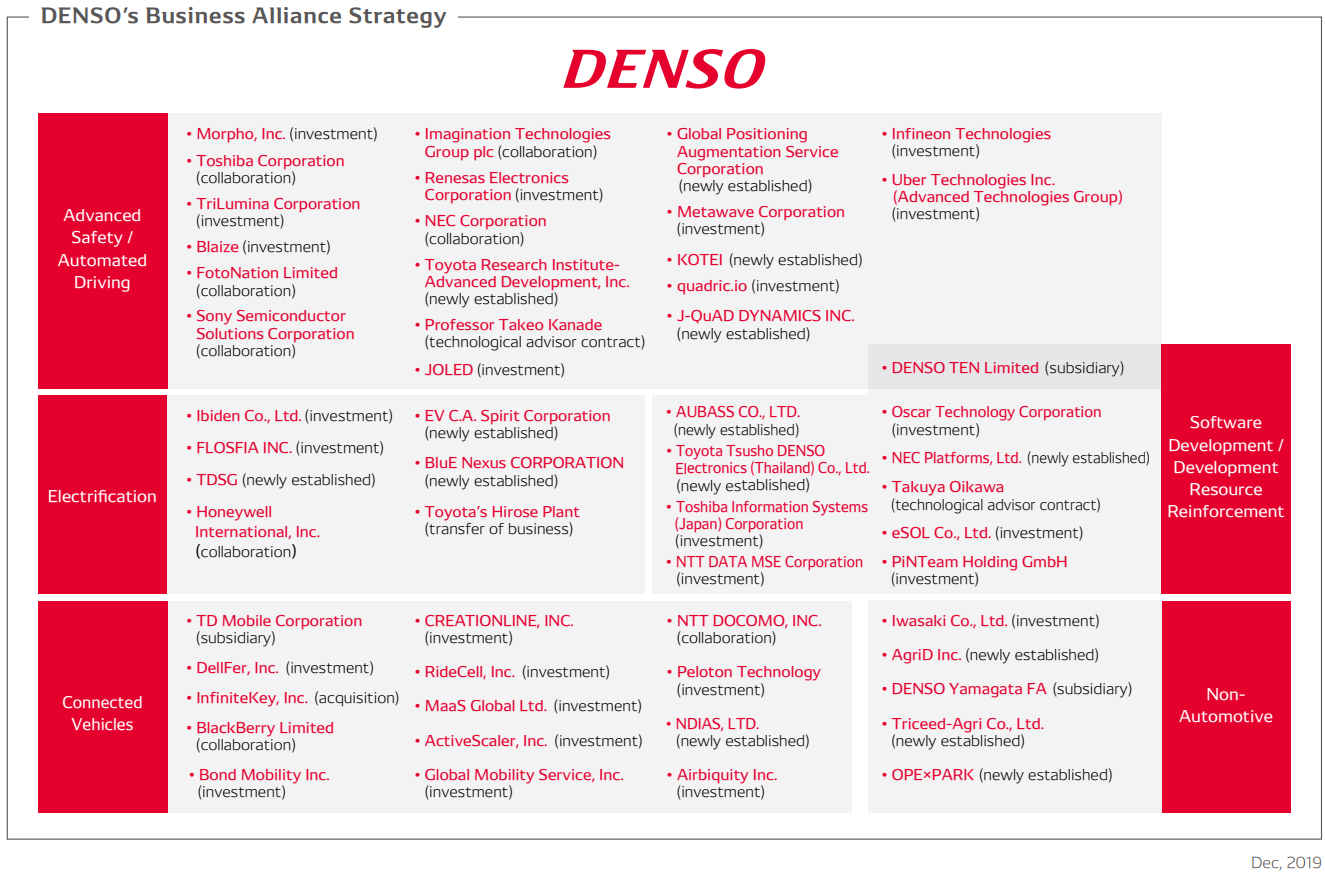
Source: Denso
Tier1 suppliers once gave an impression that they were suppliers of integrated systems for OEMs. As OEMs more set foot in system integration, Denso has turned to research and development of more basic core technologies. Weighed by new entrants from all walks of life, Denso still stays competitive on the strength of its across-the-board product matrices, economies of scale, and software and hardware synergy.
For example, Denso’s cockpit systems integrated with HMI and air-conditioning technologies will offer better user experience. This is an impossibility for the majority of companies who fail as well in high integration at the underlying layer.
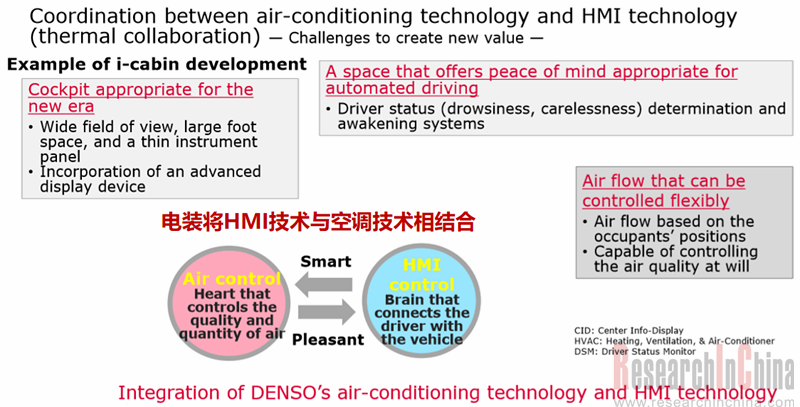
Source: Denso; ResearchInChina
OEMs and Tier 1 Suppliers' Cost Reduction and Efficiency Enhancement Strategy Analysis Report, 2025
ResearchInChina released the "OEMs and Tier 1 Suppliers' Cost Reduction and Efficiency Enhancement Strategy Analysis Report, 2025", summarizing hundreds of cost reduction strategies to provide referen...
Automotive Fixed Panoramic Sunroof and Smart Roof Research Report, 2025
With the intelligent application of car roofs as the core, this report systematically sorts out a series of new products such as fixed panoramic sunroof/openable sunroof, ceiling screen, roof ambient ...
Automotive-Grade Power Semiconductor and Module (SiC, GaN) Industry Research Report, 2025
SiC/GaN Research: Sales volume of 800V+ architecture-based vehicles will increase more than 10 times, and hybrid carbon (SiC+IGBT) power modules are rapidly being deployed in vehicles.
Sales volume o...
Cockpit Agent Engineering Research Report, 2025
Cockpit Agent Engineering Research: Breakthrough from Digital AI to Physical AI
Cockpit Agent Engineering Research Report, 2025 starts with the status quo of cockpit agents, summarizes the technical ...
Prospective Study on L3 Intelligent Driving Technology of OEMs and Tier 1 Suppliers, 2025
L3 Research: The Window of Opportunity Has Arrived - Eight Trends in L3 Layout of OEMs and Tier 1 Suppliers
Through in-depth research on 15 OEMs (including 8 Chinese and 7 foreign OEMs) and 9 Tier 1 ...
China Commercial Vehicle IoV and Intelligent Cockpit Industry Research Report 2025
Commercial Vehicle IoV and Cockpit Research: The Third Wave of Passenger Car/Commercial Vehicle Technology Integration Arrives, and T-Box Integrates e-Call and 15.6-inch for Vehicles
I. The third wav...
Intelligent Vehicle Electronic and Electrical Architecture (EEA) and Technology Supply Chain Construction Strategy Research Report, 2025
E/E Architecture Research: 24 OEMs Deploy Innovative Products from Platform Architectures to Technical Selling Points
According to statistics from ResearchInChina, 802,000 passenger cars with domain...
Research Report on Intelligent Vehicle Cross-Domain Integration Strategies and Innovative Function Scenarios, 2025
Cross-Domain Integration Strategy Research: Automakers' Competition Extends to Cross-Domain Innovative Function Scenarios such as Cockpit-Driving, Powertrain, and Chassis
Cross-domain integration of ...
China Autonomous Driving Data Closed Loop Research Report, 2025
Data Closed-Loop Research: Synthetic Data Accounts for Over 50%, Full-process Automated Toolchain Gradually Implemented
Key Points:From 2023 to 2025, the proportion of synthetic data increased from 2...
Automotive Glass and Smart Glass Research Report, 2025
Automotive Glass Report: Dimmable Glass Offers Active Mode, Penetration Rate Expected to Reach 10% by 2030
ResearchInChina releases the Automotive Glass and Smart Glass Research Report, 2025. This r...
Passenger Car Brake-by-Wire (BBW) Research Report, 2025
Brake-by-Wire: EHB to Be Installed in 12 Million Vehicles in 2025
1. EHB Have Been Installed in over 10 Million Vehicles, A Figure to Hit 12 Million in 2025.
In 2024, the brake-by-wire, Electro-Hydr...
Autonomous Driving Domain Controller and Central Computing Unit (CCU) Industry Report, 2025
Research on Autonomous Driving Domain Controllers: Monthly Penetration Rate Exceeded 30% for the First Time, and 700T+ Ultrahigh-compute Domain Controller Products Are Rapidly Installed in Vehicles
L...
China Automotive Lighting and Ambient Lighting System Research Report, 2025
Automotive Lighting System Research: In 2025H1, Autonomous Driving System (ADS) Marker Lamps Saw an 11-Fold Year-on-Year Growth and the Installation Rate of Automotive LED Lighting Approached 90...
Ecological Domain and Automotive Hardware Expansion Research Report, 2025
ResearchInChina has released the Ecological Domain and Automotive Hardware Expansion Research Report, 2025, which delves into the application of various automotive extended hardware, supplier ecologic...
Automotive Seating Innovation Technology Trend Research Report, 2025
Automotive Seating Research: With Popularization of Comfort Functions, How to Properly "Stack Functions" for Seating?
This report studies the status quo of seating technologies and functions in aspe...
Research Report on Chinese Suppliers’ Overseas Layout of Intelligent Driving, 2025
Research on Overseas Layout of Intelligent Driving: There Are Multiple Challenges in Overseas Layout, and Light-Asset Cooperation with Foreign Suppliers Emerges as the Optimal Solution at Present
20...
High-Voltage Power Supply in New Energy Vehicle (BMS, BDU, Relay, Integrated Battery Box) Research Report, 2025
The high-voltage power supply system is a core component of new energy vehicles. The battery pack serves as the central energy source, with the capacity of power battery affecting the vehicle's range,...
Automotive Radio Frequency System-on-Chip (RF SoC) and Module Research Report, 2025
Automotive RF SoC Research: The Pace of Introducing "Nerve Endings" such as UWB, NTN Satellite Communication, NearLink, and WIFI into Intelligent Vehicles Quickens
RF SoC (Radio Frequency Syst...